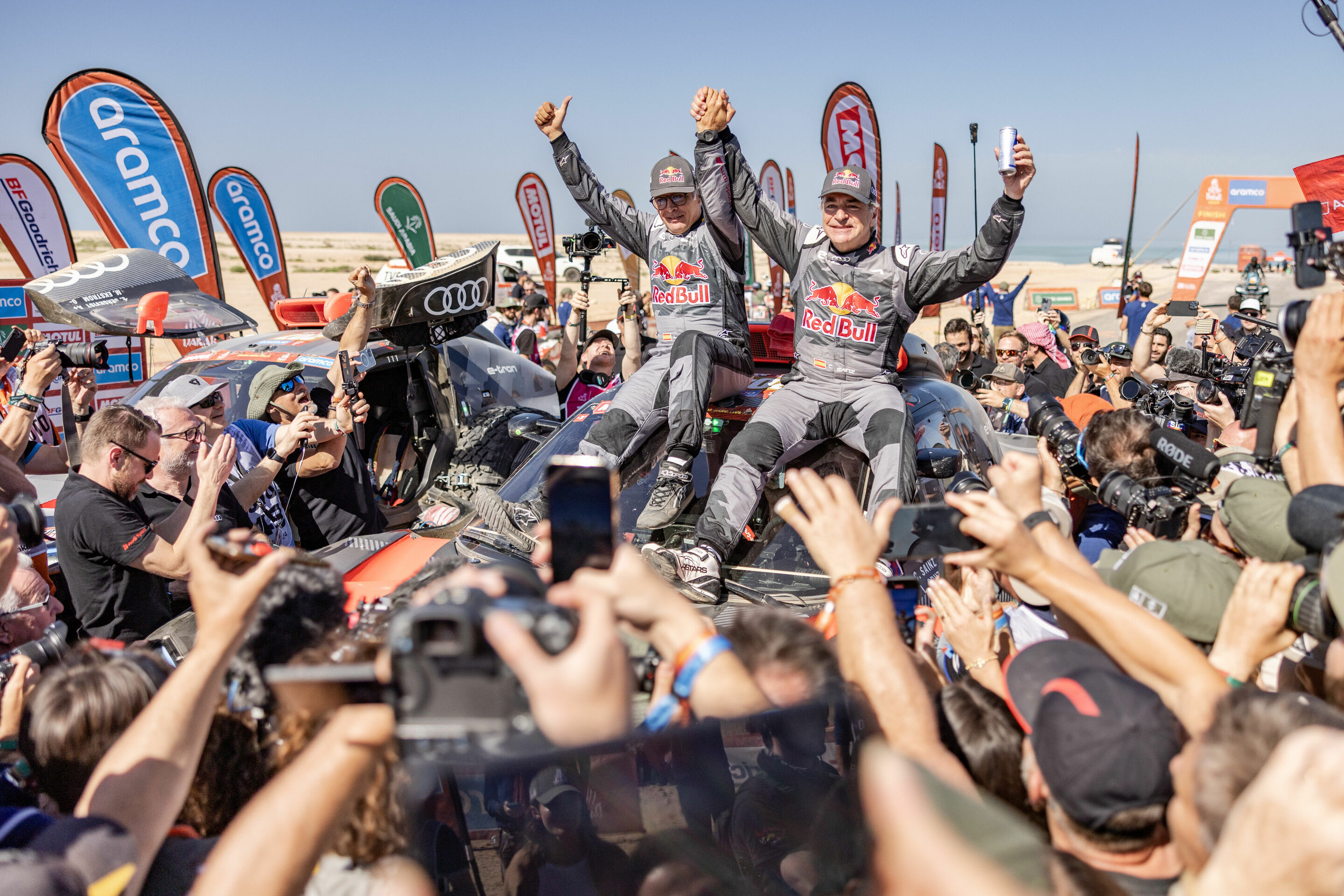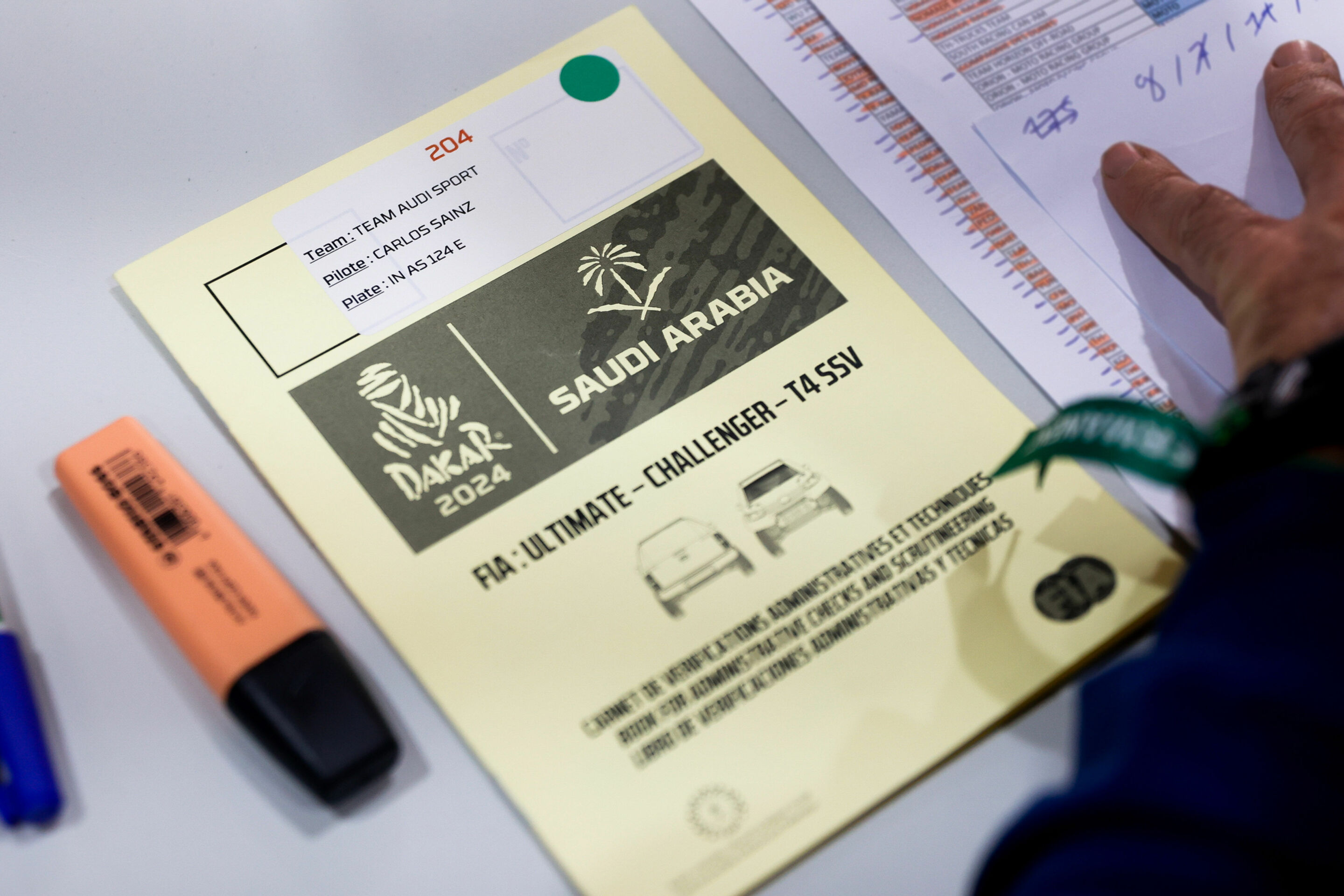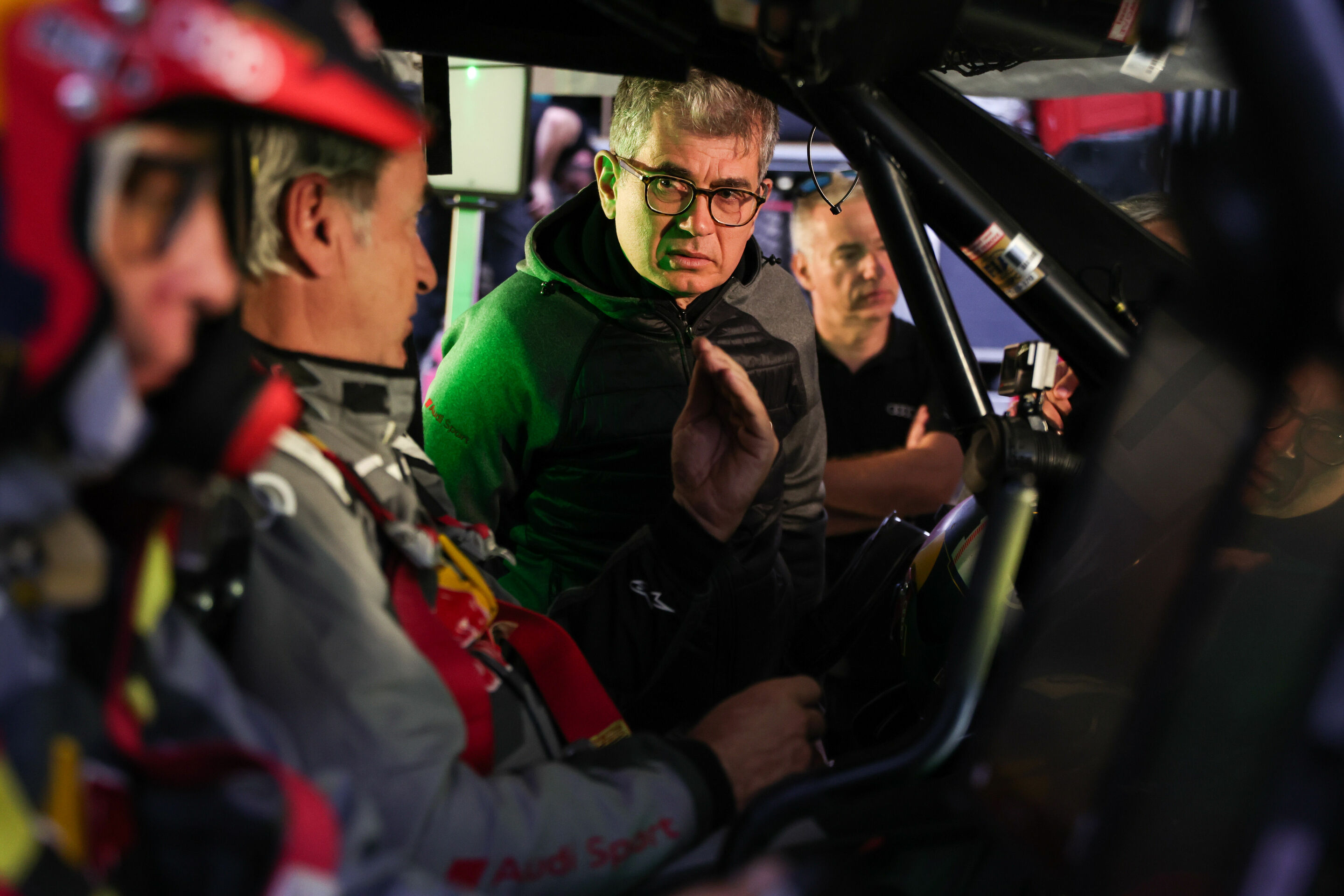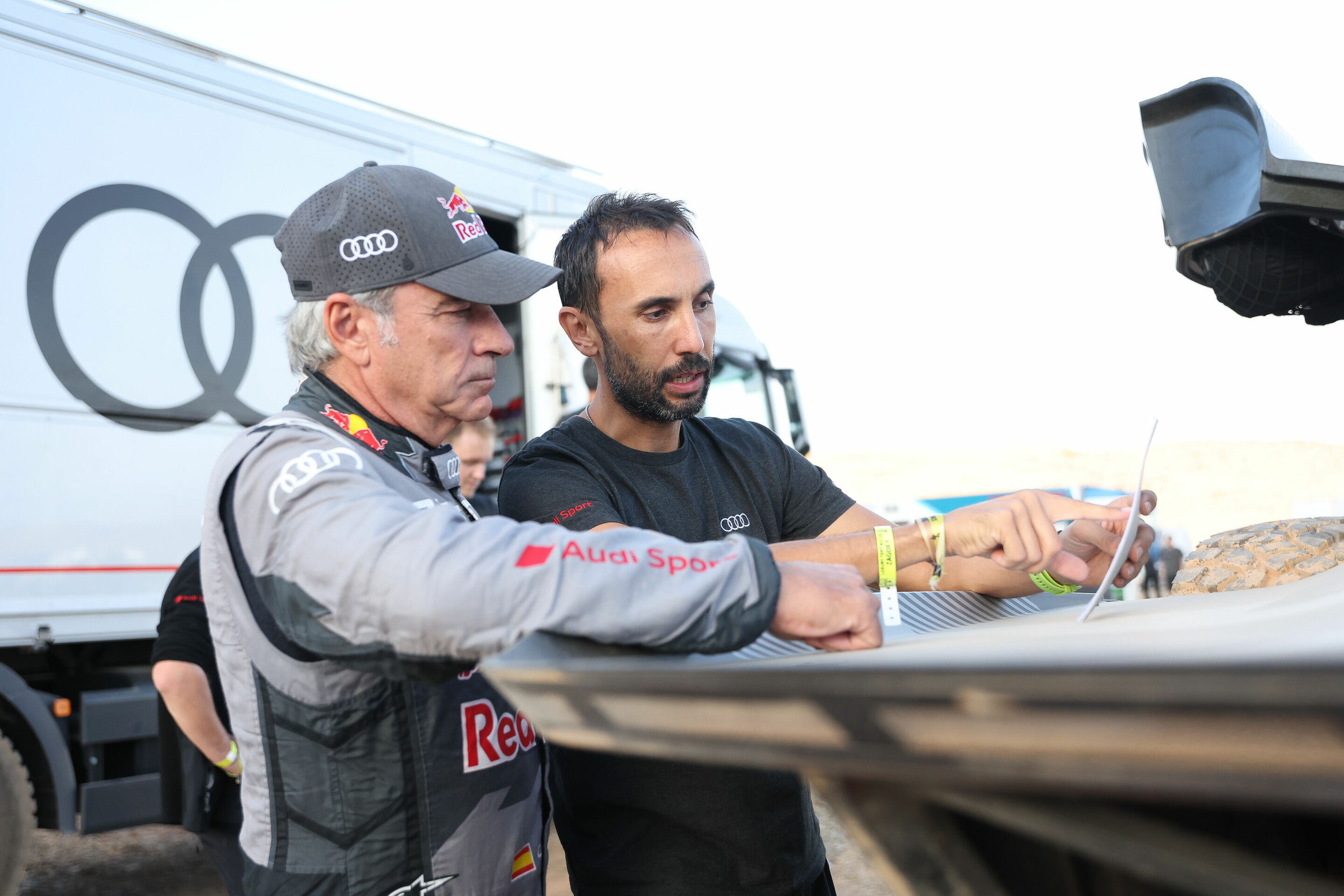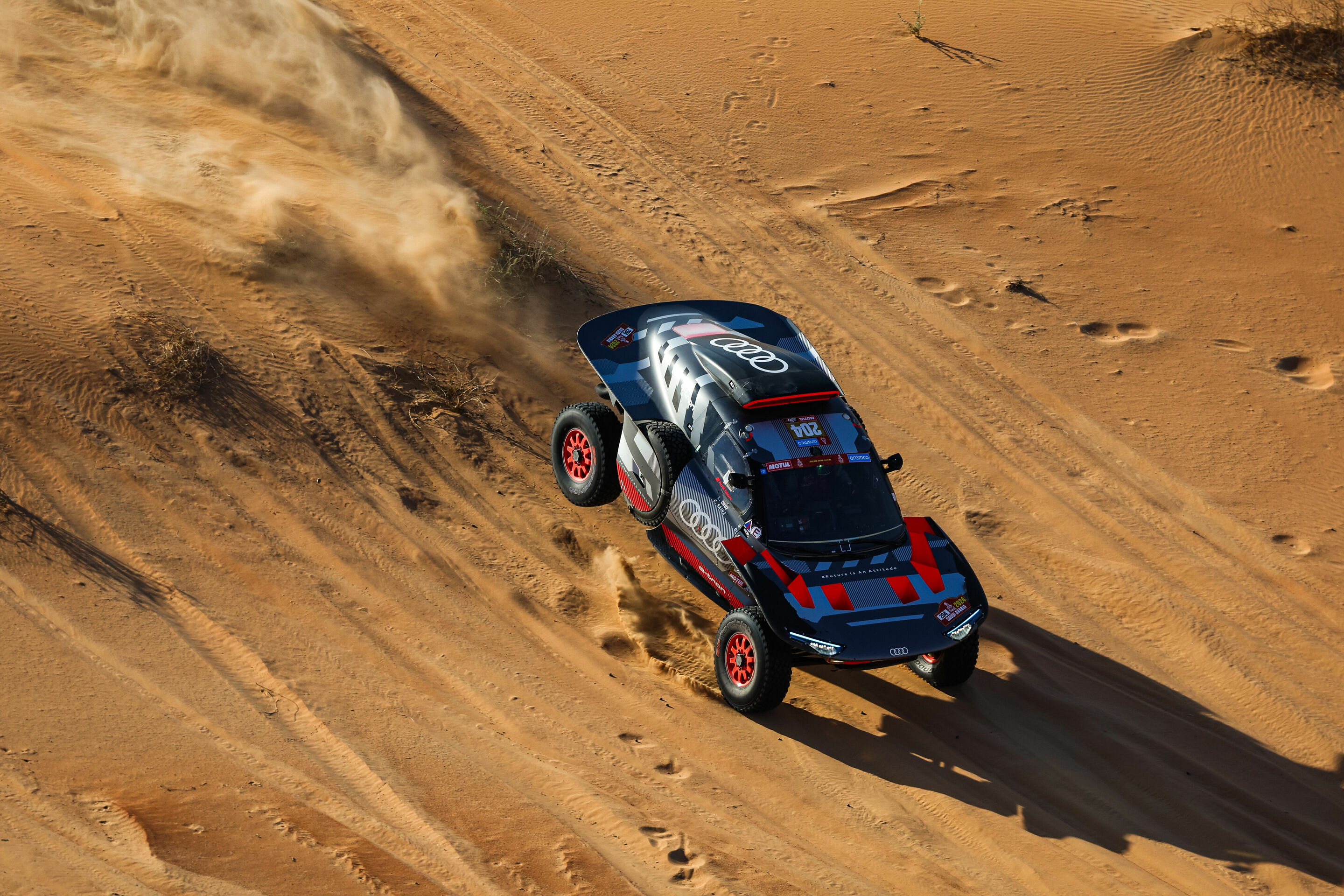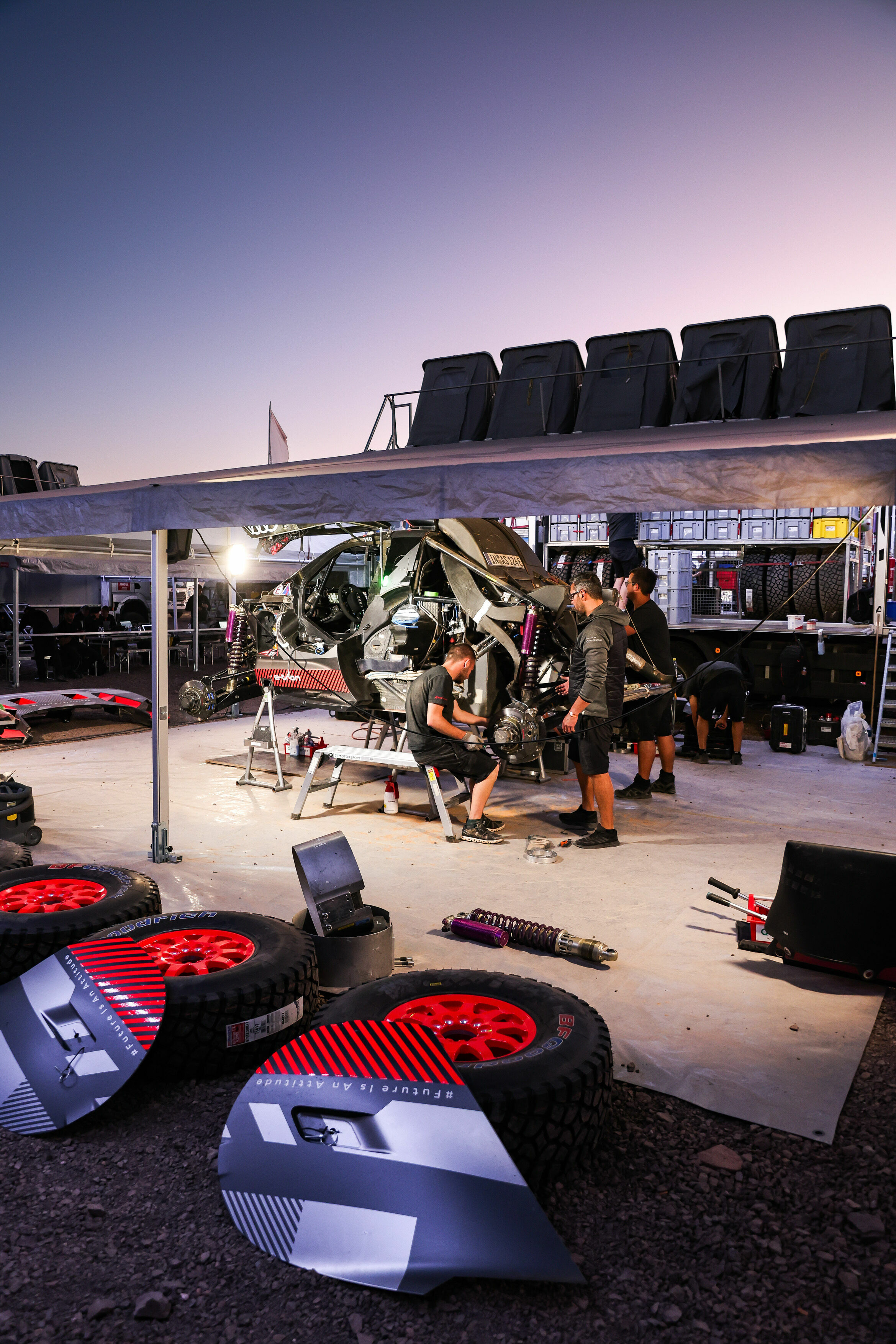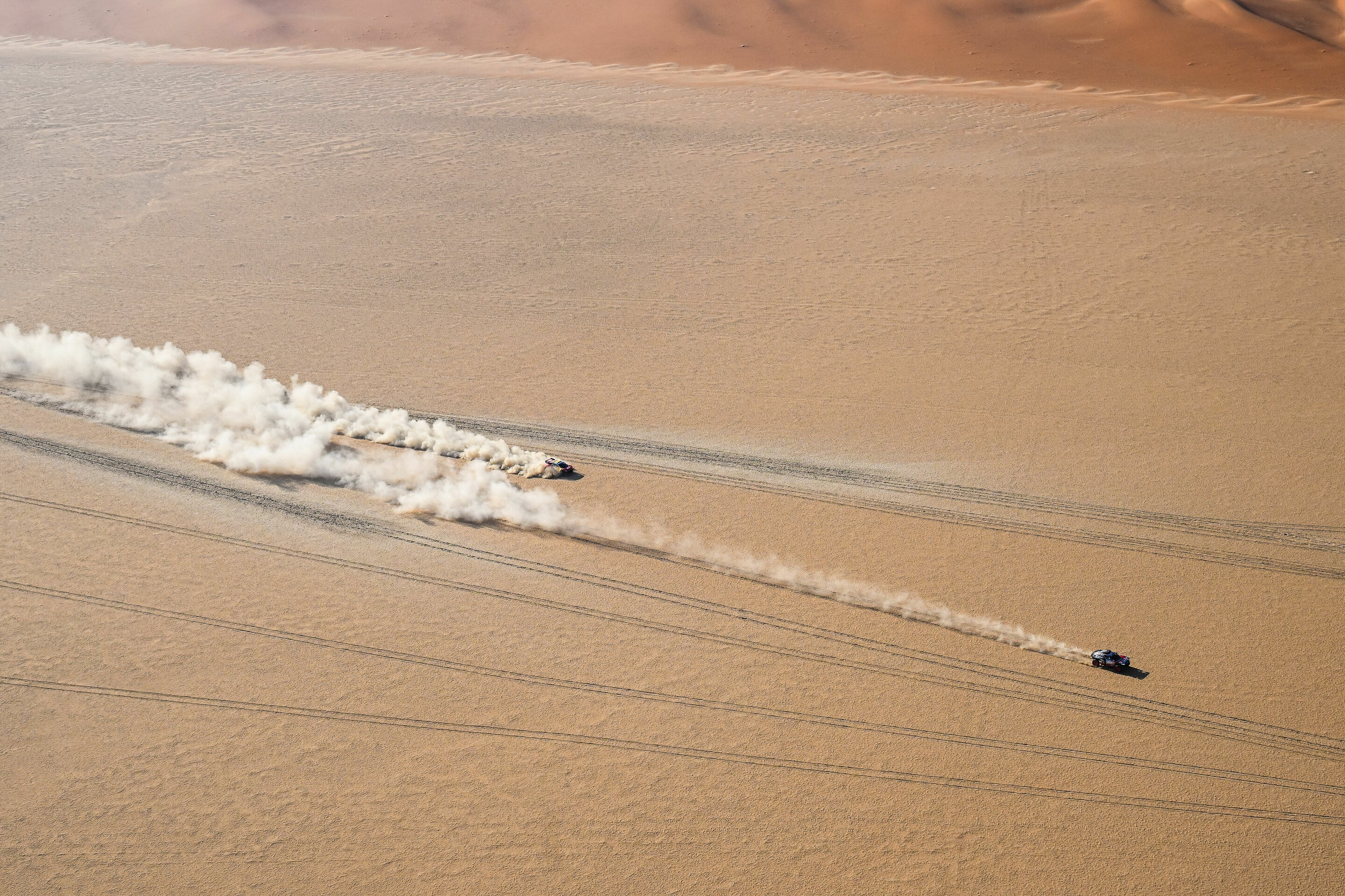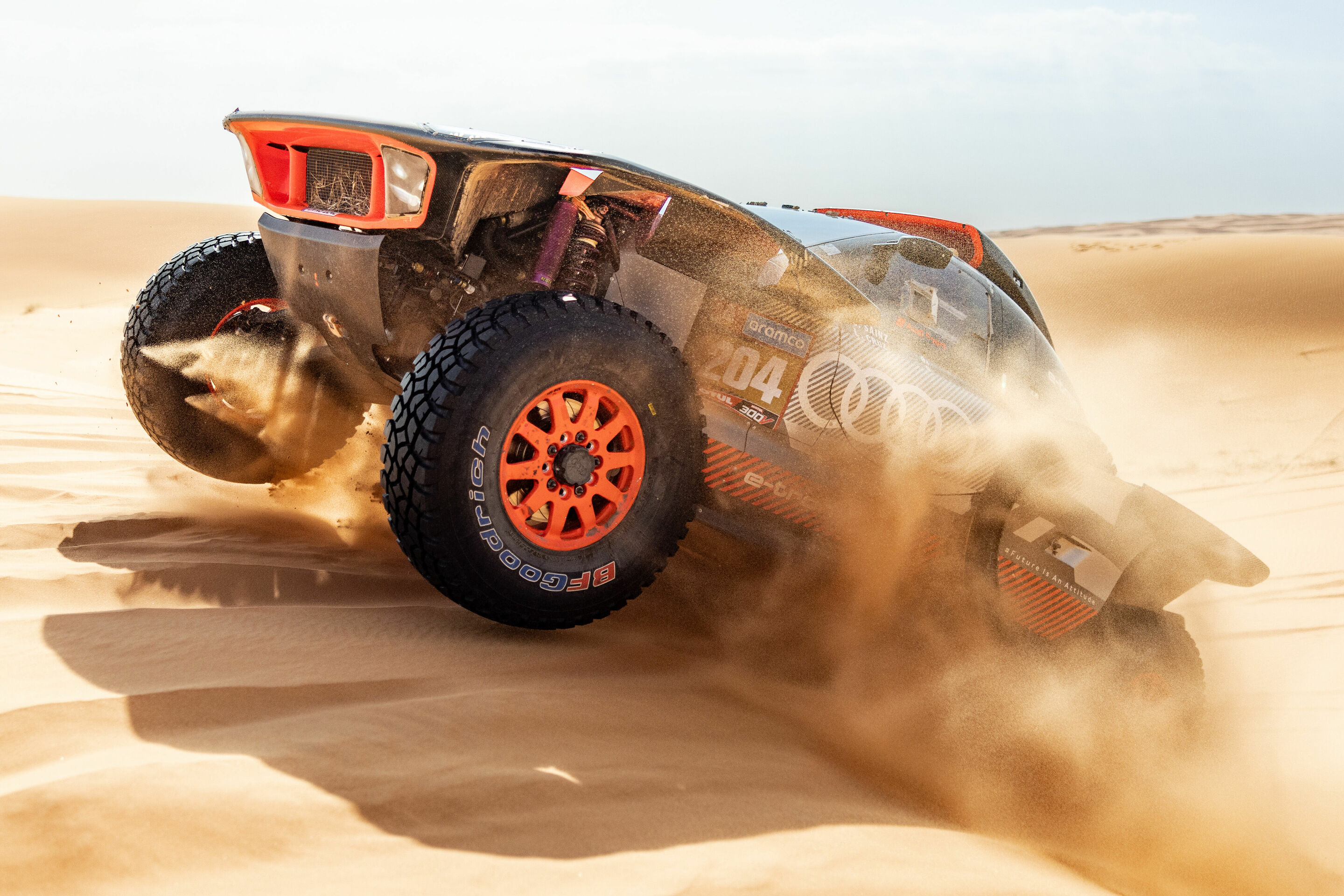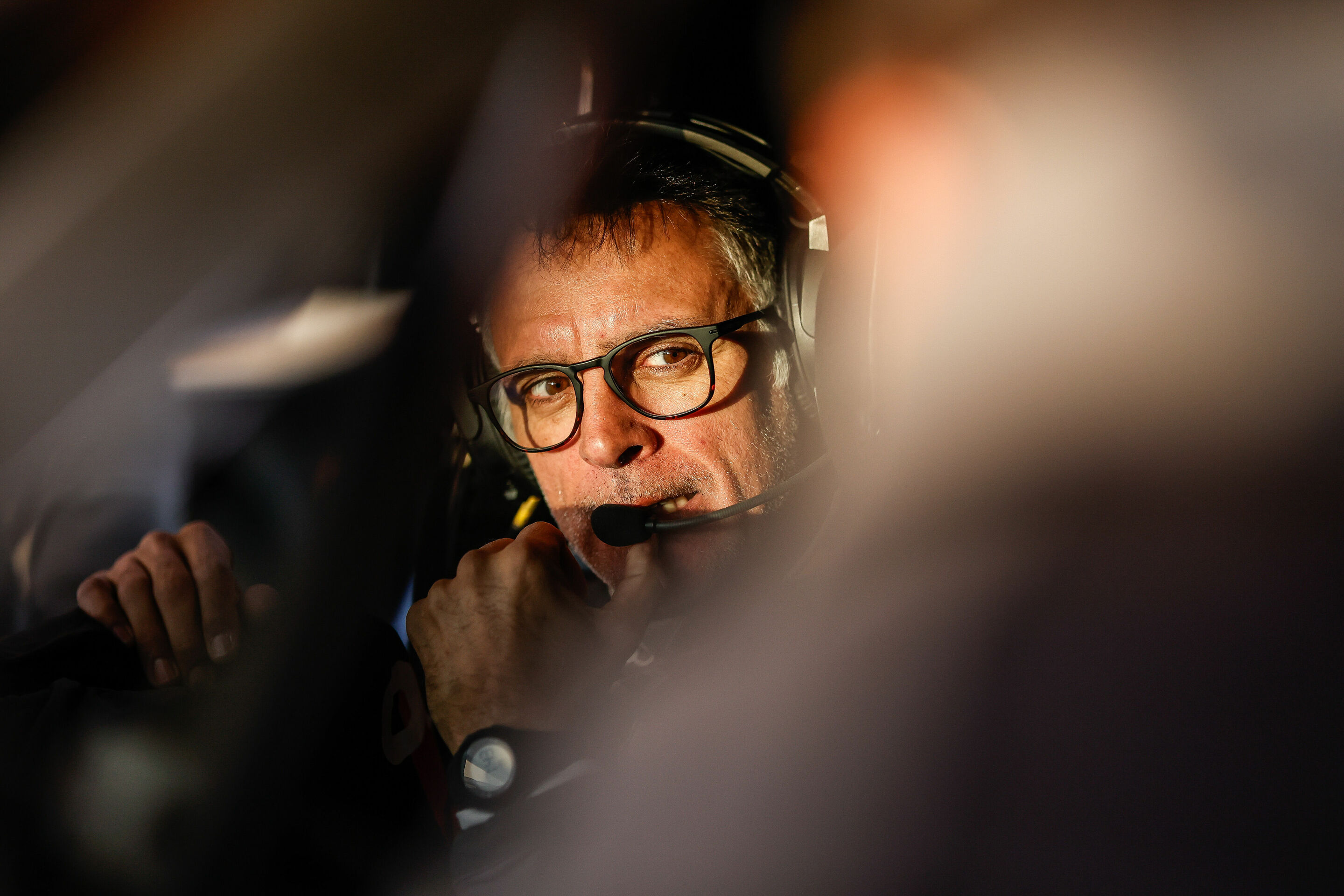Facts and figures on Audi’s Dakar victory
- Carlos Sainz and Lucas Cruz: involuntary cold showers, avoiding mistakes, hard landings and the generous gesture of a competitor
- 12.28 kilometers of uninterrupted top speed
- Clever energy management: one seventh comes from recovery
Audi made global headlines with its first Dakar victory. The analyses of Team Audi Sport, together with background stories from the bivouac, reveal many an insight worth reading.
Audi celebrated its first victory at the Dakar Rally on January 19, 2024 and Carlos Sainz/Lucas Cruz their fourth with the fourth different brand. Since 1980, Audi has achieved successes such as victories or championship titles in the World Rally Championship, the Pikes Peak Hill Climb, the Le Mans 24 Hours, the American Le Mans Series, the European Le Mans Series and the FIA World Endurance Championship WEC, in touring car categories such as the DTM, in super touring cars and in the Trans-Am, in Formula E as well as in the GT2, GT3, GT4 and TCR customer racing categories. With the triumph in the desert, one of the few remaining blank spots on the company’s global motorsport success map disappeared.
The chassis of the winning Audi RS Q e-tron bore the number 110, which Audi Sport completed on July 6, 2023. This prototype then completed the test in Zaragoza, the Baja España Aragón, the test in Morocco, the Rallye du Maroc and a test in Château de Lastours. By then, the car had already completed 5,880 kilometers. Then it was off to the 2024 Dakar Rally, where the car covered a further 8,054 kilometers. It means that number 110 has completed 13,934 kilometers to date.
Dr. Leonardo Pascali has been responsible for the development of the Dakar project as Technical Director since 2023. The doctor of engineering brings with him a wealth of experience from the automotive industry and the racing disciplines of Formula 1 and Le Mans sports prototypes, but has never worked in off-road rallying before. In his own words, having the opportunity to work in this project and then winning the Dakar Rally is the “best professional experience of my life.”
In contrast, vehicle engineer Joan Navarro has been gaining experience in desert rallies since 2013, when he joined Sven Quandt’s team. As a race engineer, he led Nani Roma to victory in the Dakar Rally in 2014, Carlos Sainz for the first time in 2020 and Stéphane Peterhansel a year later. His pride in his fourth victory as Carlos Sainz’s engineer is immense: Joan Navarro has not yet taken off his wristband, which served as access authorization for all team members during the rally, even two weeks after crossing the finish line.
The loads to which the Audi RS Q e-tron was subjected were extreme at times during a particularly challenging edition of the Dakar Rally. The hardest landing after a jump briefly generated a peak acceleration of 16 g in a vertical direction. It occurred on the third stage. By comparison, a passenger airplane is flown in such a way that the occupants are exposed to accelerations of no more than 1.5 g. Astronauts experience accelerations of 3 to 4 g during take-off, and up to 6 g can occur briefly during roller coaster rides.
Despite the high loads, Audi did not change various key components on the winning car during the rally. The front and rear motor-generator units (MGU) and inverters for the axle drive remained unchanged in the chassis, as did the high-voltage battery at the heart of the drive and the fuel tank of the energy converter. Even the suspension uprights, which were exposed to extreme chassis forces, lasted the entire distance.
On the fourth leg on January 9, the official route description from the organizer contained the note “very fast track” for the passage between the 66th and 95th kilometer of the route. The Audi engineers read out the data in the evening. They showed that the victorious Audi RS Q e-tron reached the permitted maximum speed of 170 km/h for 260 consecutive seconds (i.e. 4 minutes and 20 seconds). A remarkable value on pure off-road tracks. Such values are unthinkable on a classic racing circuit. Driving at this speed alone would require a straight of 12.28 kilometers, the run-up to this speed not included.
The sixth stage in the “Empty Quarter” was in stark contrast to that. The mountain-like dunes dramatically lowered the average speed. On around 400 kilometers of dune chains, Carlos Sainz and Lucas Cruz only achieved an average speed of around 40 to 50 kilometers per hour. What sounds like a comfortable inner-city pace is in fact torture for the highly stressed electric drive system, the two gearboxes, the four drive shafts and the cooling systems. Energy consumption also skyrocketed on this terrain.
The flawless and high-quality navigation of co-driver Lucas Cruz can be expressed not only in words of praise but also in figures. Up to the second last leg, Carlos Sainz and Lucas Cruz completed the shortest distances of all three Audi driver crews. Their efficiency in choosing the most effective route and minimizing navigation errors was awesome. The team and in particular their race engineer Joan Navarro also observed a change in his driver’s driving style in the data: Whereas Sainz’s recordings used to mostly show a sequence of full loads on the accelerator or brake pedal, this time the Spaniard modulated more with the pedals and drove less aggressively.
One of the secrets of success on the way to victory was the ingenious strategy of the team and driver. Head of Audi Motorsport Rolf Michl and Sven Quandt, Team Principal of QMS, held regular night-time meetings on race strategy after detailed stage analyses, which paid off in full. The decision to voluntarily lose five minutes on the fifth stage in order to avoid having to open the challenging sixth stage was a bold one. In comparison with all the competitors, however, it became clear in retrospect that the analysis was absolutely spot-on. Audi occupied first and second position after the sixth leg and during the rest day and Carlos Sainz/Lucas Cruz never relinquished the lead after that.
Carlos Sainz read the terrain so cleverly that he still left a safety margin despite setting good times. Between the third and sixth stage, the Spaniard took a more cautious approach as results in the top five places were enough for him. When Sébastien Loeb started to exert pressure in the second half of the rally, Sainz reduced his safety margin, but only to the extent that there was no risk of an accident. In contrast, leading competitors ended the rally prematurely after accidents or suffered time-consuming damages. Sainz won the Dakar Rally without a stage victory.
After the victory, Carlos Sainz Jr, who is a successful Formula 1 driver, revealed that he had consulted closely with his father on strategy for the Dakar Rally. The offspring advised the 61-year-old Audi factory driver not to push himself to the limit every day due to the long-distance nature of the event. Sainz senior, revered by many fans as “El Matador” since his early days in the World Rally Championship, is famous for his will to attack every kilometer.
The electric drive of the Audi RS Q e-tron with a high-voltage battery and a reFuel-powered energy converter is extremely efficient. The winner recovered a considerable proportion of the energy required in an intelligent way. During braking, the motor-generator units (MGU) converted kinetic energy into electrical energy. This recuperation covered an average of 14 percent of the daily energy requirement during the rally. A side effect: compared to conventional rally cars, the wear of brake disks was reduced. The mechanics only changed the front pair once and the rear pair twice.
On the almost 8,000-kilometer route of the 2024 Dakar Rally, the Audi winners used 54 tires as well as an additional tire that their teammates Mattias Ekström/Emil Bergkvist gave them on the tenth leg. In total, Carlos Sainz/Lucas Cruz recorded eleven punctures on their 55 tires on the often sharp-edged surface, including seven blowouts and four cases of slow punctures. The team also replaced two damaged rims.
Carlos Sainz and Lucas Cruz had to overcome many obstacles on their way to victory. These included first and foremost the challenging route, but also the smaller hurdles of everyday life in the desert. On the first day of the event, the hot water system in their motorhome did not work and the two Spaniards had to take cold showers. During the 48H Chrono stage on the sixth leg, all participants were forced to spend the night in the wilderness without their teams and prepare their own food. “It was okay once, but I didn’t need it a second time,” commented Carlos Sainz honestly. He then benefited from a generous gesture among true sportsmen: Toyota driver Yazeed Al-Rajhi let the Spaniard use his luxurious motorhome for the remaining nights. The driver from Saudi Arabia had retired on the sixth stage after a roll, allowing Sainz to take the lead.
While the regular rally days meant a lot of work for the entire team, there were also two marathon stages with more unusual conditions. In the first of these two special stages, only very limited servicing was permitted, and in the second, no work at all was allowed on the racing cars. As expected, the employees were given time off on these days. Team Audi Sport knew how to pass the time in a sporty way: The team had brought along a football table from Germany, which was very popular.
Carlos Sainz sent special greetings to his Spanish homeland with the flag of his country. At the stage finish on the last day of the rally, he wore the large-format scarf as an eye-catching cape. As he and co-driver Lucas Cruz then drove to the stage finish, Spanish-speaking team members had personalized “La Rojigualda” – the flag’s domestic name – with dedications and signatures in the meantime. Statements such as “Estamos muy orgullosos de ti” were an emotional expression of pride in the success.
Carlos Sainz knew that his wife Reyes and daughter Ana had announced their arrival at the finish of the Dakar Rally. What he hadn’t expected though was that his son Carlos Jr. had decided at short notice to travel to Yanbu with his partner Rebecca Donaldson. The surprise at meeting them was huge and clearly noticeable on the proud father’s face.
Technical Director Dr. Leonardo Pascali was doubly relieved and equally proud on January 19: During the rally, the Italian not only focussed on the team but also on the progress of his ambitious son. On the same day that Team Audi Sport won the Dakar Rally, Antonio Pascali won the “Youth Men” category for under 19-year-olds in the ILCA 6 Youth and Men’s World Championships in sailing in Mar del Plata, Argentina.
